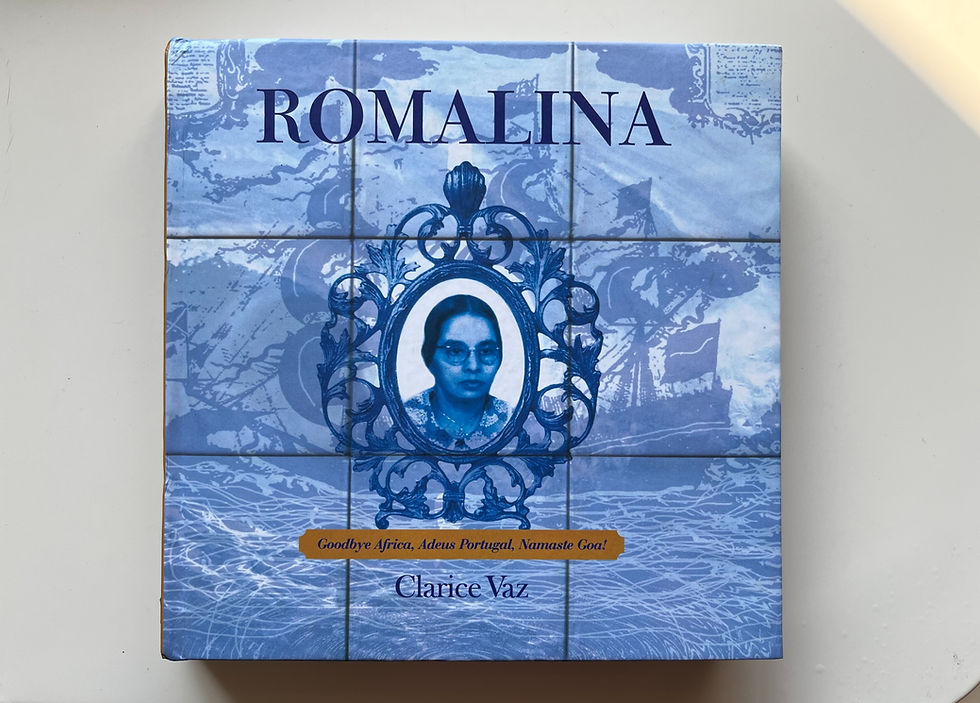FONSECA by Délio Mendonça - A Book Review
- Heta Pandit
- Oct 6, 2022
- 3 min read

I started my writing career in Goa with writing reviews for the Navhind Times. It helped me understand the land of my adoption and her people. This book, by far, is the toughest one yet. The writing is easy and lucid. The subject is familiar and already famous. It was a tough challenge simply because I realised that the more I thought I knew about Fonseca, the less I really knew. It is the way with books.
You normally don’t say this about coffee table books. That it is unputdownable. But this book truly is. I could not put it down, all heavy 251 pages of this beautifully designed (Nyhna da Cunha) work of art that passes off as a book. One always reads a Foreword and Vivek Menezes’ immaculate style of writing does justice to what is to follow. His Freword speaks of not just Fonseca and Souza (two Goan stalwarts shunned and ostracised in their own homeland) but also what goes on in the name of art in India. Every Indian is a shop on two legs just about sums up this part of the Foreword.
Vivek, in character with his generosity and love for sharing, quotes an entire analysis of the ubiquitous Dr Jose Pereira who writes on Fonseca (unpublished) of how Goans adopted Western political institutions, scientific disciplines, writing styles, music genres, art and architecture. And how, later, artists who were seen as rebels, developed a style of their own under the tutelage of Santiniketan and the great Nandalal Bose. There is also a bit about Vivek’s personal connection with Fonseca where he mentions how his mother Naomi insisted that he honour the great Indian artist in the best possible way.
Délio Mendonça’s writing is beautiful; a stroke of genius about a genius. Of the genius Délio writes about how “Fortunately, the work of geniuses, religious or otherwise, outlive and outweigh the prejudices and short-sightedness of their times. The beauty of the book is that Délio Mendonça does not stay with Fonseca. He takes us up and down the spiral staircase of Indian modernism, its challenges, into the religious, cultural and aesthetic histories of Goa; how the West “colonised” the world even in the interpretation of art. And Délio rightly points out that art is the most complete and visible representation of life.
Fonseca made 1000 paintings in the course of his 40 year painting career. And this is just what we know. Délio enriches this knowledge through this treatise on Fonseca with excerpts and analysis on Goan houses, Goan churches (lest we forget, the book has been published by renowned architect Gerard da Cunha!) and the Indic-European aesthetics that were visible in the furniture, embroidery, vestments and architectural elements of style.
It is Goa’s greatest tragedy that when Fonseca returned from Santiniketan in the hope of being able to show “his community” in Goa “an attractive, iconographic alternative” he was not embraced. Délio very touchingly says that “Fonseca had left Goa to continue his studies when he was very young and he had been away for several years. But he found that nothing had changed in Goa”.
Very little is known of Fonseca’s life in the Ashram in Pune. The author demystifies the legend and his period in Pune. Délio tells us how “credit goes to the Anglican Christians of Pune Ashram for saving Fonseca’s career”. The backdrop of the Second Vatican Council is beautifully spelt out. The purpose being “to draw the attention of the Christians that they too were part of the changing cultural order too.”
What fascinated me personally is the crisp and meaningful use of Hindu and Buddhist iconography in the mudras, positions and postures of the Virgin and the other figures in Fonseca’s work. Délio gives us a deep insight into this iconography. Gratitude, Délio.





Comments